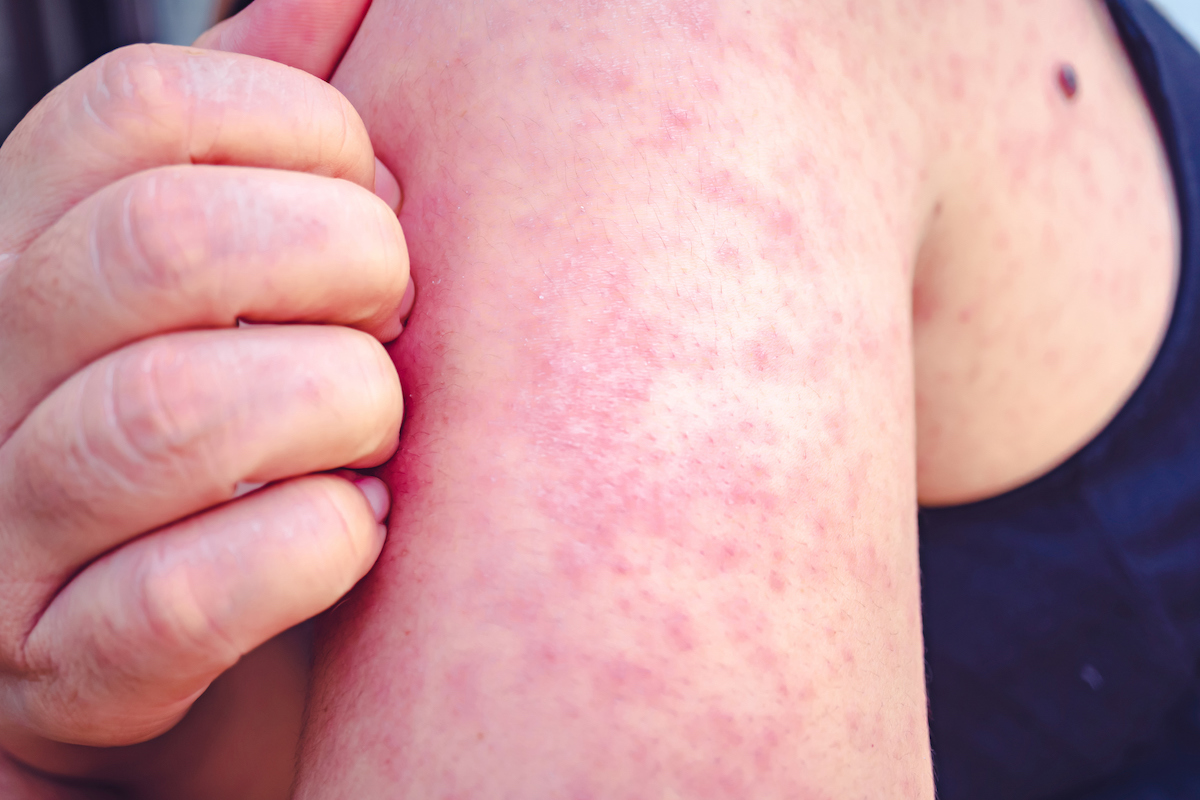Measles is one of the most contagious diseases of childhood, but it can be contracted at any age. Once mistakenly thought to be no more than a necessary nuisance, measles is now recognized as a relatively serious disease that can cause permanent brain damage. There is now an effective immunizing vaccine against measles and where it has been widely used, the disease has practically disappeared. In many parts of the United States, measles is one of a group of infectious diseases against which a child must be vaccinated before being permitted to enter school.
Important to note: Measles (rubeola) is a completely different viral disease from German measles (rubella).
Causes
The virus that causes measles is spread in the moisture expelled by the coughs and sneezes of an infected child. The contagion may also be communicated by dishes, towels, handkerchiefs and other objects contaminated by the infectious discharges from the nose and throat. Epidemics usually occur in the winter and spring. From the time of exposure to the virus to the onset of symptoms, it usually takes about 11 days. Once the child catches the measles, he himself becomes a source of contagion to others about four days before the rash appears and he continues to be infectious until the rash fades – a total of about nine days. Lifetime immunity is conferred by one attack of the disease.
Symptoms

The first symptom of measles can easily be mistaken for a cold. The child may have a runny nose, a slight cough and a bleary-eyed look. He may complain about light-sensitivity and about pains in the back of the neck and the head. Temperature is slightly elevated and rises a little each day. By the end of the third day or at the beginning of the fourth, when the temperature has risen to about 103 °F. (39.4 °C), the second stage begins with the appearance of Koplik’s spots on the mucous membranes that line the inside of the cheeks and the mouth. These are small white dots surrounded by an area of inflammation. The characteristic measles rash then begins to appear, starting at the hairline and behind the ears and spreading downward so that the entire body is covered in about 36 hours. As it breaks out, the rash consists of separate pink spots; later the spots run together into blotches which turn brownish and fade after about a week.
Complications

Since resistance is lowered and because the membranes of the upper respiratory tract are affected, a child with measles is vulnerable to bacterial infections such as bronchitis and bronchial pneumonia. The middle ear may become infected and ulceration of the cornea may occur. If the measles virus invades the brain or spinal cord, the result may be in meningitis or encephalitis that can cause permanent damage in the form of learning disabilities or epileptic seizures.
Treatment

If a child who has not been immunized against measles is exposed to it, the doctor should be notified at once. Within the first few days of exposure, administration of the vaccine may ward off the disease. It is also possible for the doctor to give the child a shot of gamma globulin which can be effective during the first five days after exposure. If these safeguards are impossible or if the disease is too far advanced to prevent, the child with measles symptoms should be put to bed and kept there throughout the course of the illness- until the fever and rash are entirely gone. The doctor should be informed of the illness since he may wish to prescribe antibiotics as a safeguard against secondary infection. Aspirin may be recommended to relieve headache, pains in the joints and to bring fever down. Fluid intake should be greater than usual and meals easily digestible. Nose drops and cough medicines should be given only at the doctor’s recommendation.

